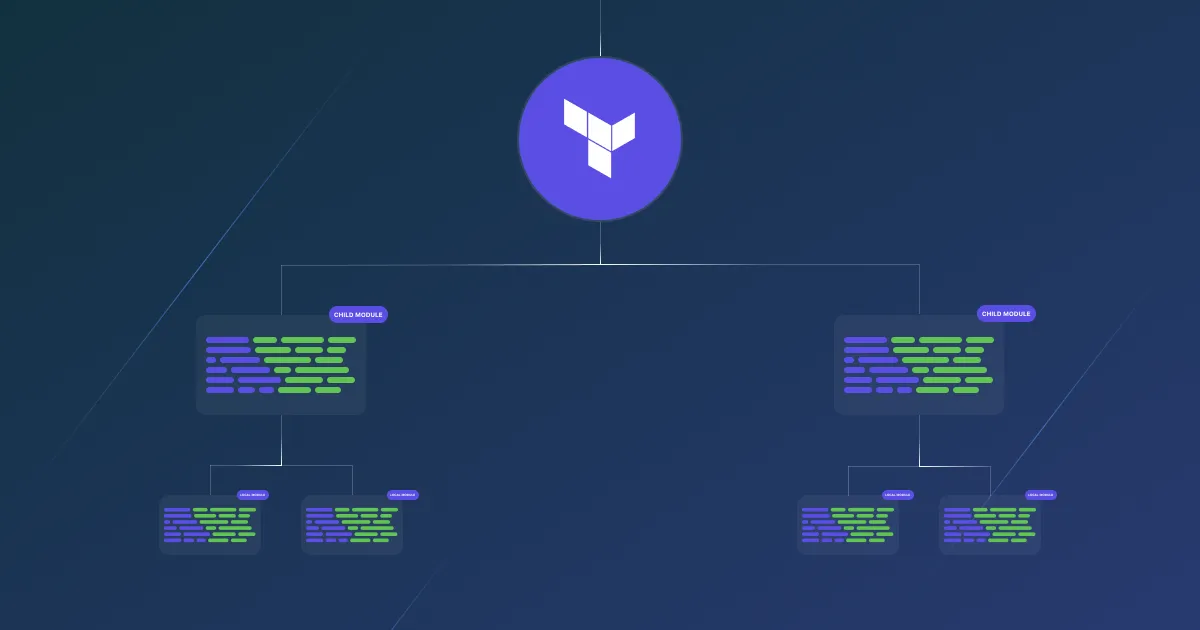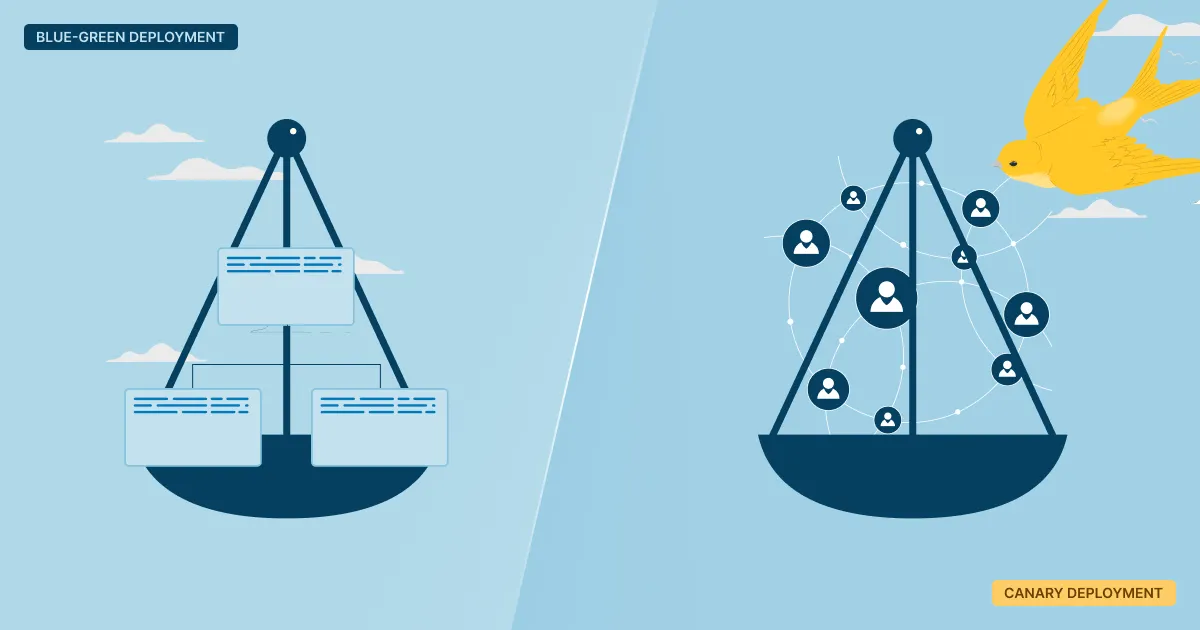Terraform Modules Best Practices: A Practical Guide

Terraform is a great tool for managing infrastructure as code and maintaining clean, consistent configurations. However, as infrastructure scales, managing it within a single container can become complex and time-consuming.
That’s where Terraform modules come in. They help streamline infrastructure deployment, improve reusability, and ensure consistent provisioning across environments. In this article, we’ll explore the importance of Terraform modules, the different types available, and best practices for using them efficiently.
Importance of Terraform Modules
What is a Terraform module exactly? A set of configuration files (.tf or .tf.json) focused on a single purpose that reduces the amount of code you need to write for similar infrastructure components.
They allow you to extend your current Terraform configuration by adding pre-existing, reusable code, which minimizes the amount of code you need to write for similar components. Also, they enable you to break down complex configurations into smaller components that are easier to manage and maintain.
Modules also support better collaboration, as teams can share and iterate on well-defined infrastructure components without interfering with each other's work. Some of the main benefits they provide are:
- Consistency: By using the same module across different deployments, you ensure that infrastructure is created in a standardized and predictable way. This reduces the chances of human error, which can lead to bugs.
- Reusability: Modules let you define infrastructure components and reuse them across multiple projects or environments, saving time and reducing duplication. This entirely removes repetitive code.
- Collaboration: With modules, different teams can own and manage different parts of the infrastructure. This separation of work can lead to better teamwork, more transparent control, and fewer merge mistakes.
- Scalability: As infrastructure grows, the work becomes hard to maintain. Modules are useful because they divide complex configurations into individual, smaller parts.
- Maintenance: When updates or improvements are needed, you can make changes within a module and apply them to all instances where it is used. They also help you introduce version control, so changes can be tracked and tested without disruptions.
Terraform modules play a crucial role in creating clean, organized, and scalable infrastructure. Keeping in mind their benefits will help you maintain, organize, and deploy your code more effectively, efficiently, without issues or disruptions. If you are ready to take your infrastructure to the next level, exploring advanced patterns for building custom cloud components is a natural next step.
Module Anatomy: How a Standard Module is Structured
A standard module is structured with a specific file and directory layout designed for clarity, reusability, and ease of maintenance. This structured approach makes modules more maintainable and easier for teams to understand and contribute to. And when you are working with multiple Terraform environments, having this kind of solid organizational foundation becomes even more important.
Here is an overview of the typical anatomy of a standard module:
- main.tf serves the primary resource definition file, where you declare your infrastructure resources. This file contains the core logic of your module and defines what resources will be created.
- variables.tf defines all input variables that make your module configurable and flexible. These variables allow users to customize the module's behavior without modifying the core code.
- outputs.tf specifies the values that your module will return to the calling configuration. These outputs enable other modules or the root configuration to access important information about the resources created.
- versions.tf declares the required Terraform version and provider constraints, ensuring compatibility and preventing version-related issues.
- README.md provides comprehensive documentation explaining the module's purpose, usage examples, input parameters, and output values.
- Additional files like locals.tf for local values and data.tf for data sources can be included when needed.
How to Know It’s Time to Use a Terraform Module?
You should use Terraform modules whenever you find yourself repeating similar infrastructure code. They are especially useful when deploying the same resources across multiple environments, such as development, staging, and production.
Prioritize reusability to start using Terraform modules. Even in smaller setups, using modules early on can help you be efficient. Additionally, if you're writing infrastructure code that might be reused or shared, it's a good time to consider using a module.

Different Types of Terraform Modules
Depending on how the modules are written, there are two types: root and child modules. Also, whether they are published or not, they can be local and published. Let’s explain them more.
Root Modules
All Terraform configurations have their own root module. All resources in the .tf files are defined as a root module in a Terraform configuration. It is still a root file even if you are just making a main.tf with a local variable.
Remember that each Terraform configuration can be used as a reusable module for future configurations. Every module within a module is called a child module, and each module can call other modules.
Child Modules
The root module contains child modules. The child modules have the same objects and characteristics as the root module. The root module can only interact with the data inside the child module through the input variables and output values indicated by the child module.
Child models can develop and improve as long as they maintain compatibility with the root module.
Local Models
Local modules in Terraform are not yet published. With clear input and output definitions, local modules can act as building blocks for larger systems. Local modules are particularly useful in early-stage projects and single-environment setups.
Published Modules
A published module has a tag attached to it and has been posted to a Terraform Registry. If the conditions for publishing a module are met, you can simply upload your module to the Terraform registry.
Terraform Modules Best Practices
Following best practices for testing, security, collaboration, and reusability is crucial to start using Terraform. Implementing these practices will increase productivity, decrease errors, and improve the consistency of your Terraform code. Here are some best practices to use Terraform modules:
1. Keep Modules Focus
Each module should serve a single purpose, such as managing a VPC. This makes the module easier to understand, reuse, and maintain, while reducing complexity and potential errors.
2. Use Input Variables Strategically
Define clear input variables to make your modules flexible. To prevent unexpected behavior, clearly indicate important inputs as needed and provide suitable defaults when applicable.
3. Define Output Values
The output values are how data is returned to the parent module from the child module. Any valid Terraform data structure can be used as the data type for the output value.
4. Document Your Modules
Every module should include a README.md file that explains its purpose, how to use it, and what inputs and outputs it accepts. Clear documentation improves usability and team collaboration.
5. Establish a Consistent Directory Structure
Standard layout with files like main.tf, variables.tf, and outputs.tf should be followed in order to maintain a consistent structure. This makes it easier for teams to read, navigate, and extend your modules.
6. Test Modules Independently
Testing modules before integrating them helps identify issues early. Use terraform validate, terraform plan, or tools like Terratest to ensure that each module behaves as expected.
Conclusion
The Terraform modules best practices help to build a strong infrastructure that scales efficiently. Modules simplify scaling by breaking down complex configurations into manageable components and enhancing collaboration through shared and standardized patterns. They also ensure consistency across different environments and deployments.
Start with simple modules for commonly repeated resources and, as your infrastructure needs grow, gradually expand to more sophisticated patterns. It's best to focus on clear documentation, proper testing, and maintainable structure from the beginning.
Adopting the Terraform modules best practices today reduces future risks, eliminates technical debt, and builds a solid foundation for infrastructure growth. When considering developer self-service pricing models, well-tested modules become even more important for maintaining cost efficiency and reliability.
Frequently Asked Questions
What tools can help improve Terraform module development?
Tools like Terratest for automated testing, terraform-docs for generating documentation, and pre-commit hooks for validation can significantly improve module quality. IDE extensions and linters also help maintain code standards.
How do I avoid dependency conflicts across modules?
Use explicit version constraints in your versions.tf file, implement proper module versioning, and maintain clear dependency graphs. Avoid circular dependencies and use data sources instead of direct resource references between modules.
When is it overkill to create modules in a project?
Creating modules is overkill for one-time, simple resources that won't be repeated, very small projects with minimal infrastructure, or when the overhead of module maintenance exceeds the benefits of modularity.
Subscribe to receive the latest blog posts to your inbox every week.
*By subscribing you agree to with our Privacy Policy.

Relevant Posts



